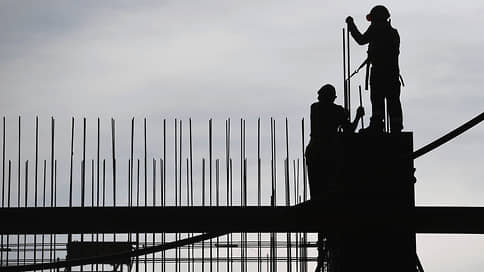Steel consumption was predicted to fall – Newspaper Kommersant No. 68 (7513) of 04/19/2023
[ad_1]

The World Steel Association expects a decrease in steel consumption in Russia in 2023 by 5%, and in 2024 – by another 6.7%. In general, global demand, although it will remain positive, will slow down. Experts doubt such a strong drop in steel consumption in Russia and in any case do not expect it to continue in 2024, explaining the possible decline this year by the high base formed by the record volume of housing construction in 2021–2022.
Steel consumption in Russia in 2023 may fall by 5%, to 39.6 million tons, follows from the forecast of the World Steel Association. In 2024, a further 6.7% decline is expected. At the same time, the WSA expects some growth in steel consumption in Ukraine and the CIS countries, as it predicts an overall reduction in demand in Russia, the CIS countries and Ukraine in aggregate by 3.5% in 2023 and 4.3% in 2024. In fact, this means an improvement in the forecast compared to the fall of 2022, since then the WSA expected a 6.7% drop in consumption in this region in 2023.
In the world as a whole, the WSA expects steel consumption to grow by 1.7% this year to 1.854 billion tons, primarily due to the recovery of the Chinese economy. However, according to the association, demand growth will remain limited due to persistent inflation and rising interest rates. The WSA expects demand to grow outside of China in 2024, while the economy of the world’s largest producer and consumer of steel will face stagnation.
In general, WSA forecasts regarding the dynamics of steel consumption in Russia usually turn out to be more gloomy than reality. In April 2022, the association predicted a 20% reduction in consumption for the year, but in the end it fell by about 3%. Steel output fell by 7.2% (according to WSA), or by 7.4% according to Rosstat.
Metals & Mining Intelligence expects steel consumption in Russia to grow by 1-3% in 2023, Ilya Kolomeets, director of business development and consulting practice, told Kommersant. At the same time, total production may decrease by 1-3%, the main reduction will be in export markets. Drivers of domestic demand, in his opinion, will be infrastructure construction, the recovery of consumption in engineering (although it will not be fast), as well as the state defense order, the volume of which is difficult to estimate, but there is an obvious growth.
On the contrary, Airat Khalikov, Executive Director of Gazprombank’s CEP, predicts a 5-7% decline in steel demand in Russia in 2023. “Still, the main steel consumption sector is construction, and this year’s decline is largely due to the high base of 2021-2022, when there were very high construction rates,” he notes. However, he expects demand to pick up again in 2024 as the economy restructures.
In the spring of this year, steel prices in the domestic market began to rise again, which caused complaints from the construction sector. Nevertheless, according to Airat Khalikov, the effect of price growth on the demand for rolled products in construction will not be significant. “Firstly, the prices for rolled products in Russia have not yet grown so much compared even to world quotations, since the growth of the latter in January-February could not be translated into domestic prices before the start of the construction season, which starts in March-April. Secondly, the metallurgists themselves claim, and this is rather true, that the cost of the metal is an insignificant part of the total cost of construction,” he notes.
The strategy of the metallurgical complex developed by the Ministry of Industry and Trade until 2030 in the base scenario provides for an increase in the consumption of rolled steel in the Russian Federation from 39 million tons in 2022 (including new territories) to 44.6 million tons in 2023 and 46.1 million tons in 2024. At the same time, the conservative scenario available in the strategy assumes consumption stagnation until 2030.
[ad_2]
Source link





